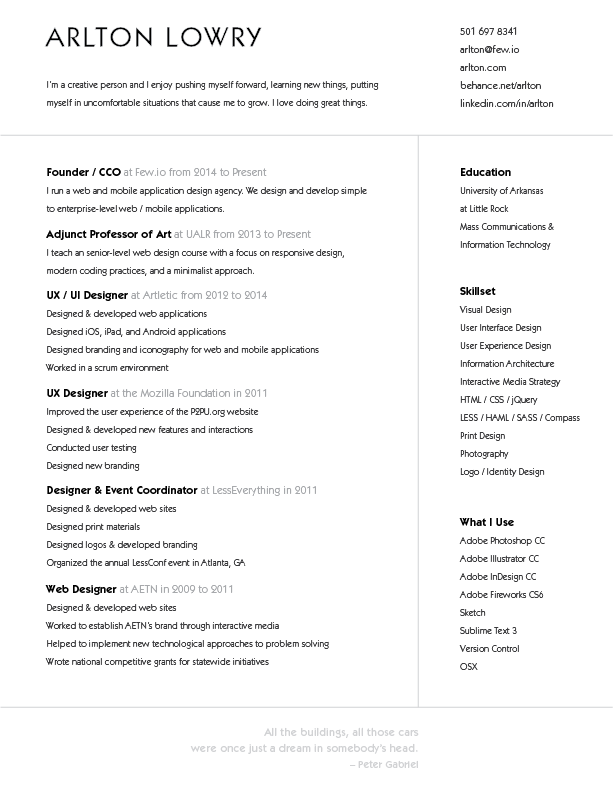No matter what year you are, you’ll need an updated and professional resume, for whatever job or internship you’re applying to. Resumes are the first thing an employer sees before meeting you and they typically only spend about 5-7 seconds reviewing it, so it’s important to leave a positive first impression. Seriously, it’s time to adult and get your act together. Here are some easy tips and suggestions that will get your resume where it needs to be!
For Resumes:
format
- There are lots of different ways to organize the information on your resume, but the reverse chronological order (where your most recent experience is listed first) is still your best bet!
- Stick to one full page! Put the most important information, even if you have to get rid of information about your lifeguard job from high school. That doesn’t need to be there anyway.
- Keep it organized and readable. Use a basic font like Helvetica or Arial and leave some white space around the page for readability.
- Keep the page consistent with the fonts and spacing you are using.
- Experience should be listed before education.
spelling/grammar
- Triple check your spelling and grammar! 43% of hiring managers will disqualify a resume because of a spelling error.
- Come to the Career Center and have it checked by our coaches!
references
- Do not write “References available upon request.” The employer assumes you have references and may ask for them later on. Keep a separate document of all your references.

Sample Resume
content
- Keep your listed skills aimed toward the job or internship you are applying for, avoid using cliche words like “organized, good communicator, leader,” these words are overused and your hiring manager has probably seen these hundreds of times.
- Don’t include a photo of yourself. 88% of employers reject resumes with a photo on it to avoid accusations of discrimination.
- Add any notable awards, volunteer roles, or leadership roles!
- For contact information, include your name (should be the biggest heading on the page), your phone number and email. If you really want that job, you’ll retire your iHeaArtJOnasBrozxoX@aol.com email. Your email should be professional and should have your name in it. 76% of resumes with unprofessional email addresses are trashed! An easy fix!
- Also include your LinkedIn username, link to your website or portfolio if applicable. A website is a good way to showcase your work if the employer is further interested in hiring you.

The difference between your resume and cover letter is that your resume should provide the reader with a better understanding of who you are. Your cover letter should connect the dots for the reader and show how your previous experiences apply to the job for which you are applying.
For Cover Letters:
Research – Read the job description.
Select – From the job description, select 2-3 key responsibilities or qualifications that you possess.
Substantiate – For each of the 2-3 responsibilities or qualities that you have picked, develop a specific example that represents how you have previously performed similar tasks or displayed similar qualities/skills. (This evidence can come from your previous work or academic experiences.)
Format
- Opening Paragraph:Indicate the position for which you are applying or the general field to which your background applies. Mention how you became aware of the position (e.g. through advertisement, referral, etc). Next, in general, state the 2-3 job responsibilities or qualities you chose from the job description that distinguish your candidacy and meet the needs of the prospective employer.
- Body Paragraph:Provide evidence that supports the 2-3 job responsibilities or qualities you found in the job description.The goal of your cover letter is to generate interest in the resume itself. Be sure you use the language of your field. Also, use words that imply action.
- Closing Paragraph:Refer to the documents you have enclosed, such as your resume and other requested materials and ask for a meeting (interview) at the employer’s convenience. In this paragraph, you should also provide your contact information again so that this information is accessible.
- Signature and Printed Name
For more on resumes and cover letters, check out the career center website, there are more resources and information there!
By: Emily Street
Communications and Design Intern
Temple University Career Center
Junior Advertising Major
